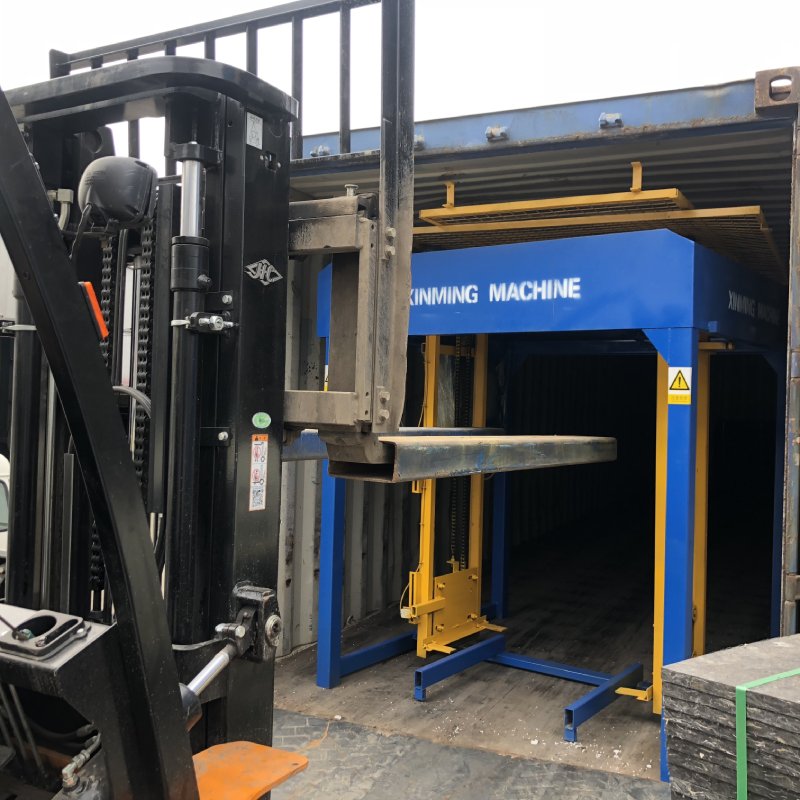
Image source:Aiwei block machine
Introduction
Chinese brick making machines have played a significant role in revolutionizing the brick manufacturing industry, not only in terms of efficiency and productivity but also in waste management. Efficient waste management practices are essential for reducing environmental impact, optimizing resources, and promoting sustainability. This article explores the importance of waste management in Chinese brick making machines, discussing key strategies, technologies, and benefits in managing and minimizing waste throughout the brick manufacturing process.
Waste Generation in Brick Making
Brick manufacturing involves various stages that generate different types of waste. Understanding these waste sources is crucial in implementing effective waste management strategies.
Raw Material Waste:
The brick production process involves raw materials such as clay, sand, and cement. Waste can arise from imperfect or damaged raw materials, excessive material consumption, or inefficient handling and storage.
Production Waste:
During the brick molding process, excess clay or mixture may be trimmed or cut off, resulting in production waste. This waste can include trimmings, offcuts, and rejects that do not meet quality standards.
Packaging Waste:
Packaging materials such as plastic bags, pallets, and straps used for transporting and storing bricks can contribute to waste generation. Proper disposal or recycling of packaging materials is essential for waste management.
Emissions and By-products:
Brick kilns can emit pollutants, such as particulate matter, gases, and ash, which require proper treatment and disposal. By-products, such as kiln dust or ash, may also need to be managed.
Waste Management Strategies
Chinese brick making machines employ various waste management strategies to minimize waste generation, promote resource efficiency, and reduce environmental impact.
Recycling and Reuse:
Implementing recycling programs within brick manufacturing facilities allows for the reuse of production waste. Crushed or ground waste materials can be reintegrated into the production process, reducing the need for raw material extraction and conserving resources.
Process Optimization:
Optimizing the brick manufacturing process can reduce material waste and improve efficiency. This can be achieved through improved quality control, precision molding techniques, and optimized material mixing ratios.
Waste Segregation and Sorting:
Proper waste segregation and sorting at the source enable efficient recycling and disposal. Separating different waste streams allows for effective recycling and the appropriate handling of hazardous materials.
Energy Recovery:
Some waste materials, such as biomass or certain by-products, can be used as alternative energy sources in brick kilns. Energy recovery not only reduces waste but also lowers energy consumption and greenhouse gas emissions.
Environmental Compliance:
Adhering to environmental regulations and standards ensures responsible waste management practices. Compliance involves proper disposal of hazardous waste, emissions control, and documentation of waste management processes.
Technological Advancements in Waste Management
Advancements in technology have significantly contributed to improved waste management in Chinese brick making machines.
Waste Sorting and Recycling Equipment:
Integrated waste sorting and recycling equipment automate the process of segregating different waste streams, enabling efficient recycling and reuse. Automated systems can sort waste materials based on composition, size, and quality, facilitating effective resource recovery.
Alternative Fuels and Energy-efficient Kilns:
Chinese brick making machines are incorporating advanced kiln technologies that allow the use of alternative fuels, such as biomass or recycled materials, for energy generation. Energy-efficient kilns not only reduce waste but also minimize energy consumption and greenhouse gas emissions.
Monitoring and Control Systems:
Advanced monitoring and control systems enable real-time tracking of waste generation, energy consumption, and emissions. This data helps identify areas for improvement, optimize processes, and ensure compliance with waste management regulations.
Waste-to-Energy Technologies:
Waste-to-energy technologies, such as gasification or pyrolysis, convert certain waste materials into useful energy sources. These technologies can be integrated into brick manufacturing facilities to reduce waste volume and generate clean energy.
Benefits of Effective Waste Management
Implementing effective waste management practices in Chinese brick making machines offers numerous benefits:
Environmental Conservation:
Proper waste management reduces the environmental impact of brick manufacturing, minimizing resource extraction, conserving energy, and mitigating air and water pollution.
Resource Optimization:
Recycling and reusing waste materials reduce the need for virgin raw materials, preserving natural resources and extending their lifespan.
Cost Savings:
Efficient waste management practices can result in cost savings through reduced material consumption, improved energy efficiency, and lower disposal costs.
Regulatory Compliance:
Adhering to waste management regulations ensures compliance, avoiding legal penalties and reputational risks.
Sustainable Image and Market Advantage:
Emphasizing sustainable waste management practices enhances a company’s reputation and provides a competitive edge in a market that values environmental responsibility.
Conclusion
Waste management is a critical aspect of Chinese brick making machines, enabling the industry to operate sustainably and responsibly. By implementing effective waste management strategies, such as recycling and reuse, process optimization, and energy recovery, the brick manufacturing sector can reduce waste generation, conserve resources, and minimize environmental impact. Technological advancements further enhance waste management practices, enabling efficient sorting, alternative fuel usage, and real-time monitoring. Embracing sustainable waste management not only benefits the environment but also contributes to cost savings, regulatory compliance, and market competitiveness. As the Chinese brick making machine industry continues to evolve, an ongoing focus on waste management will be crucial for its long-term sustainability and success.
